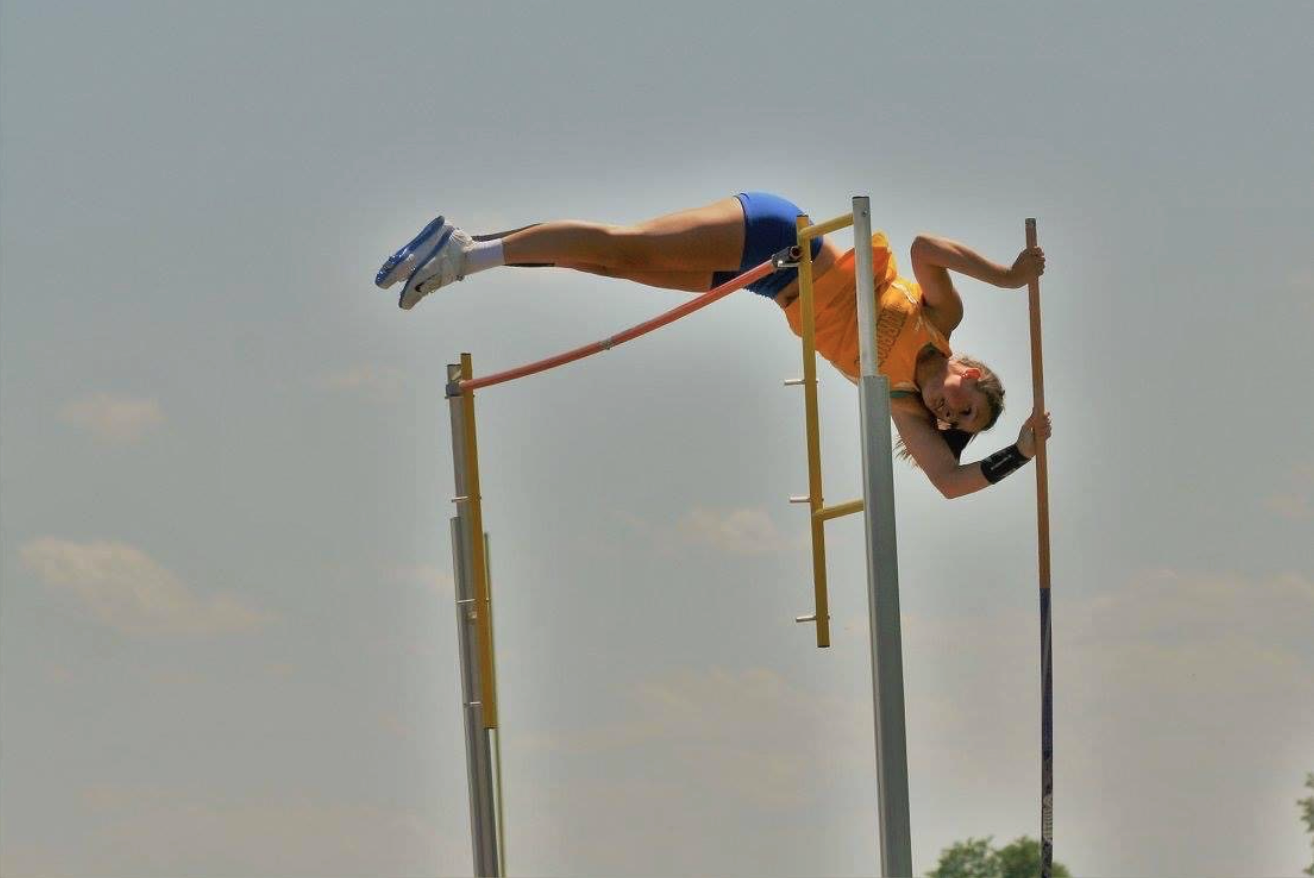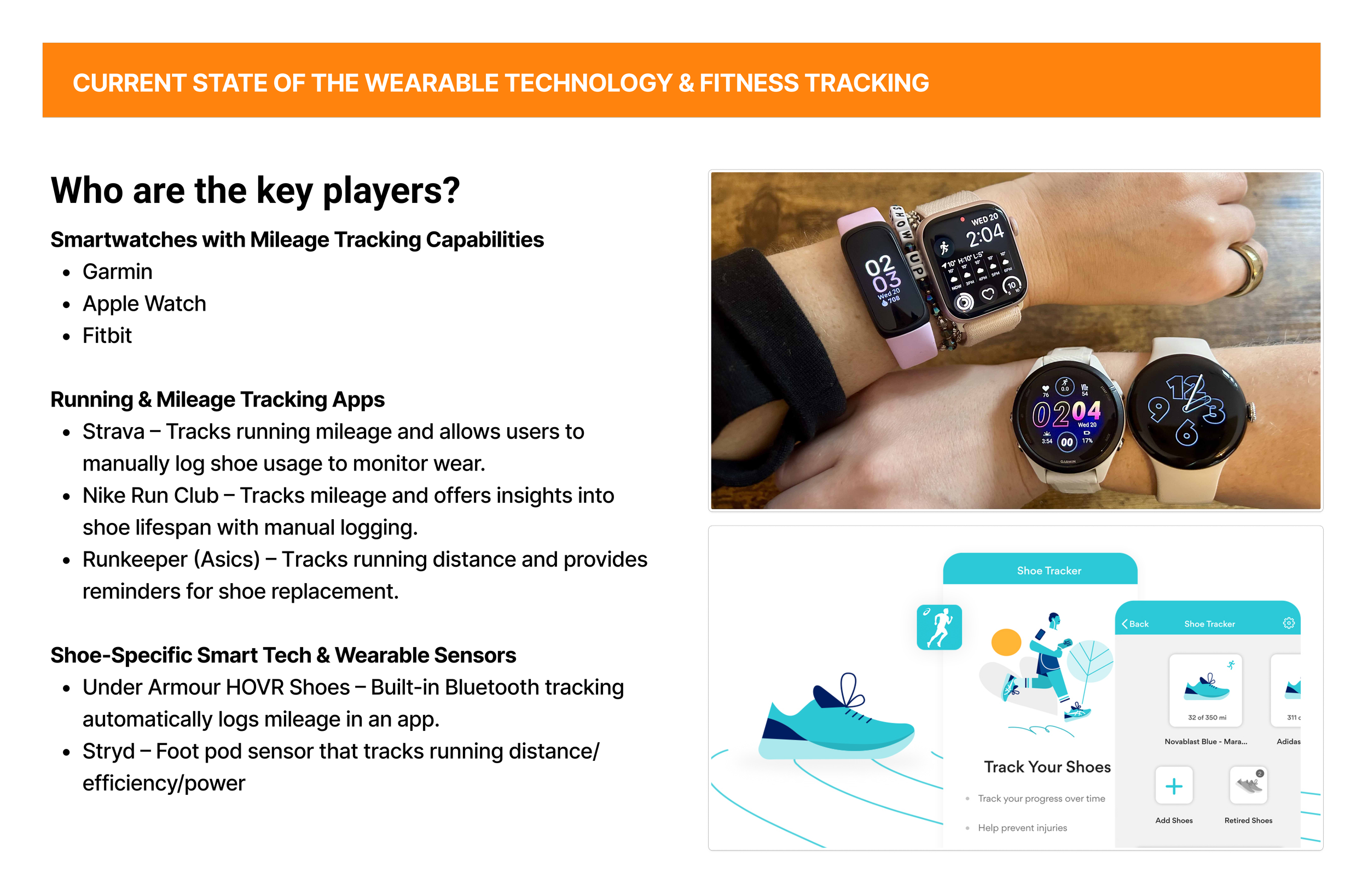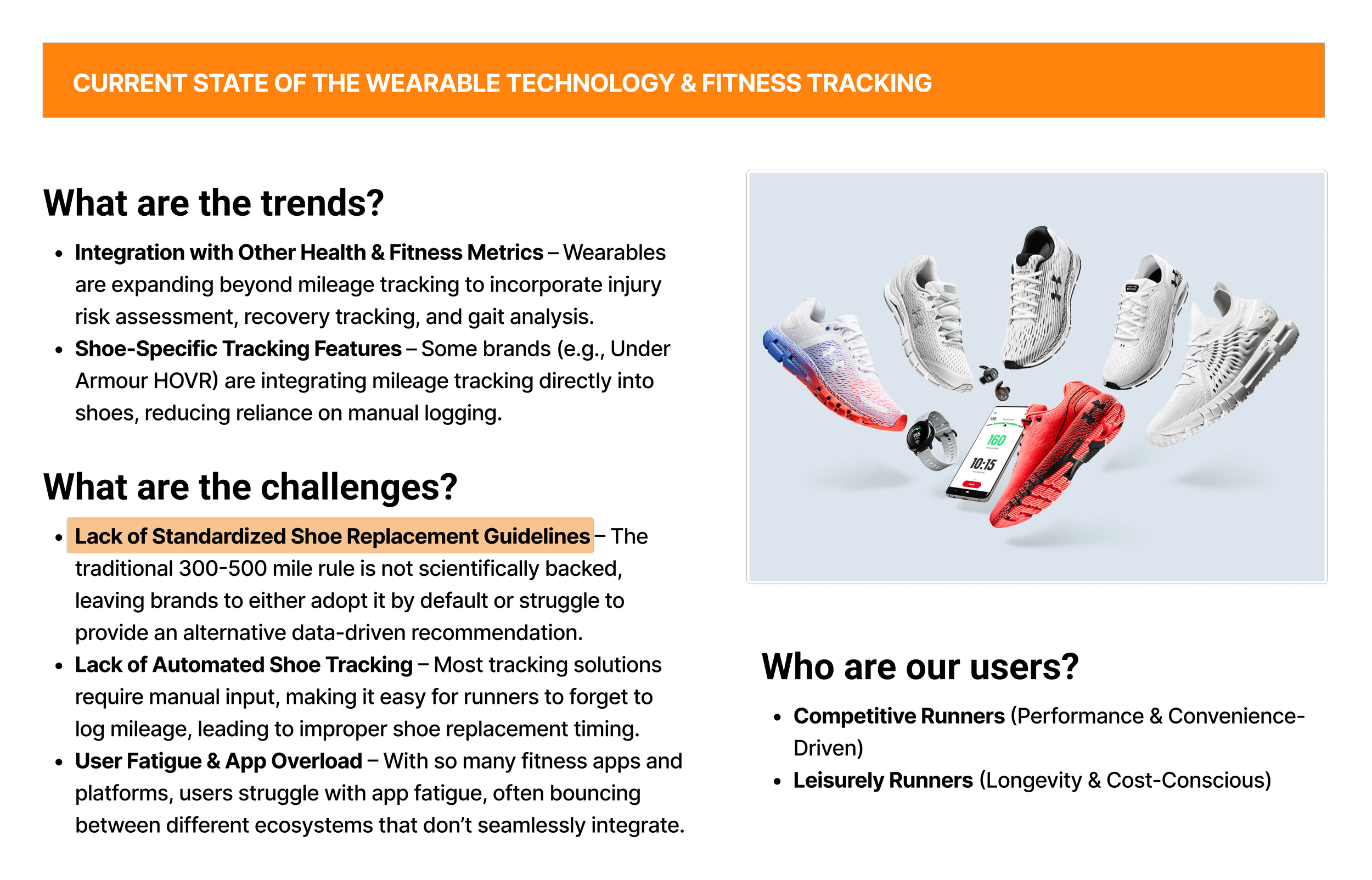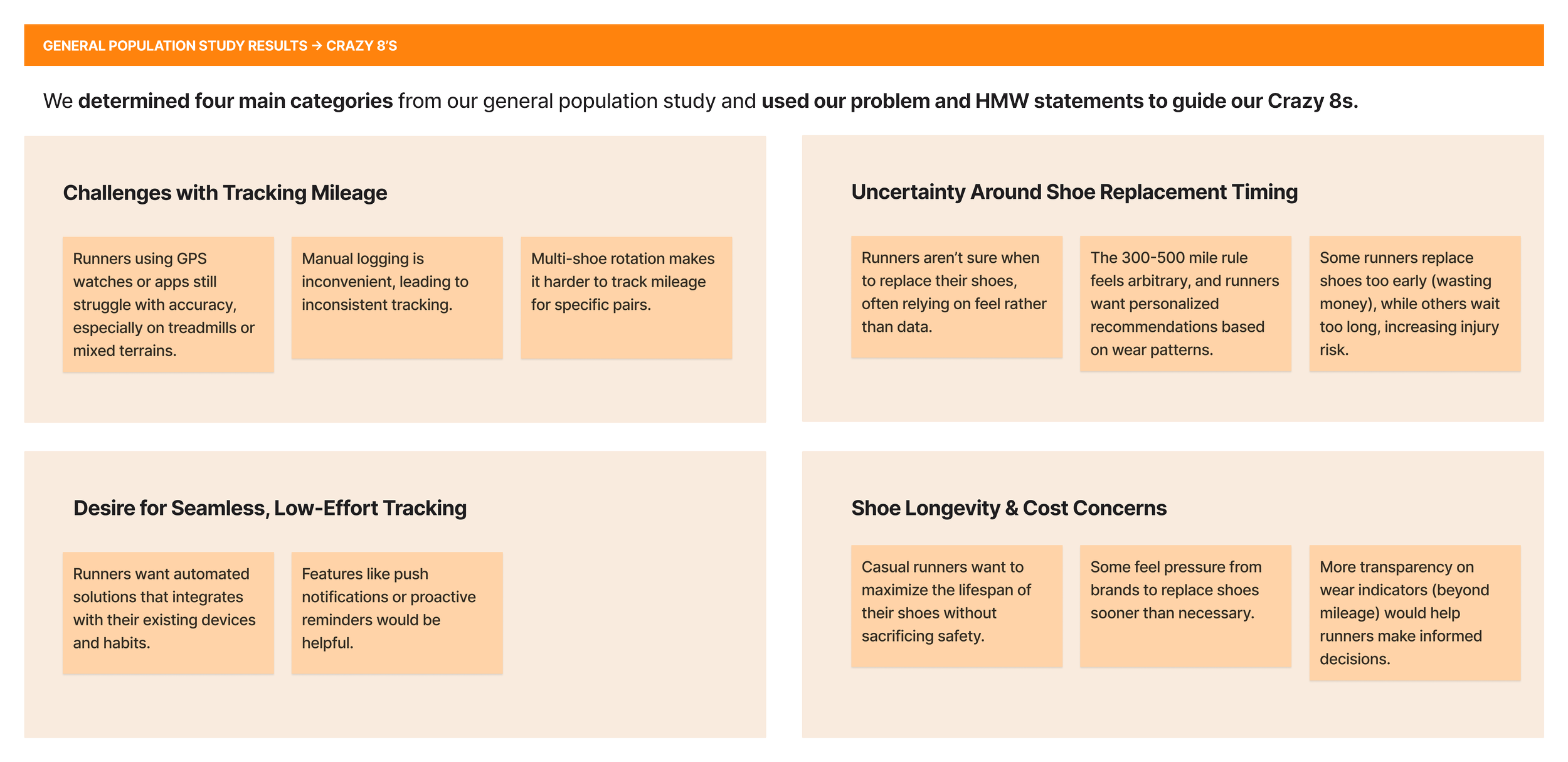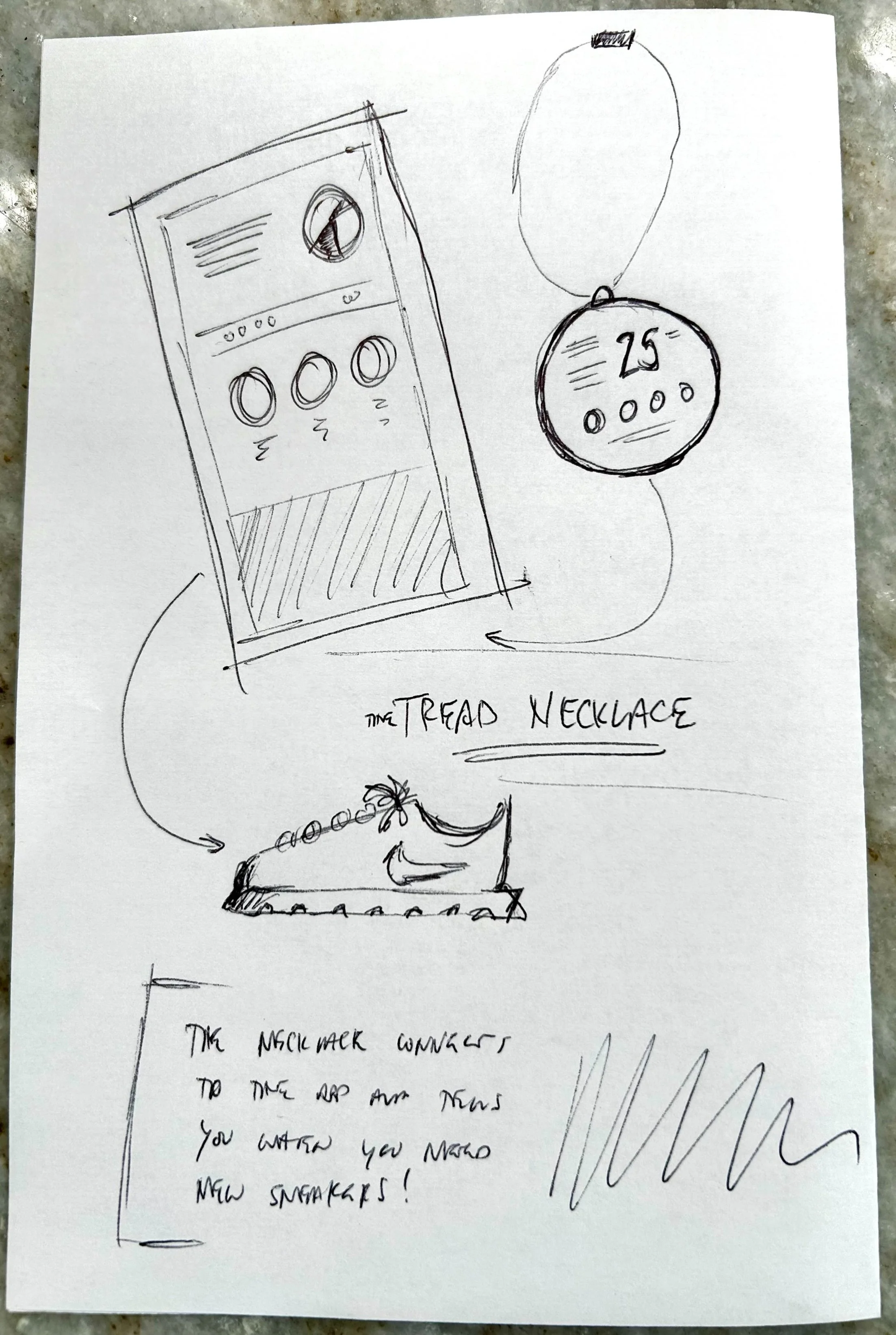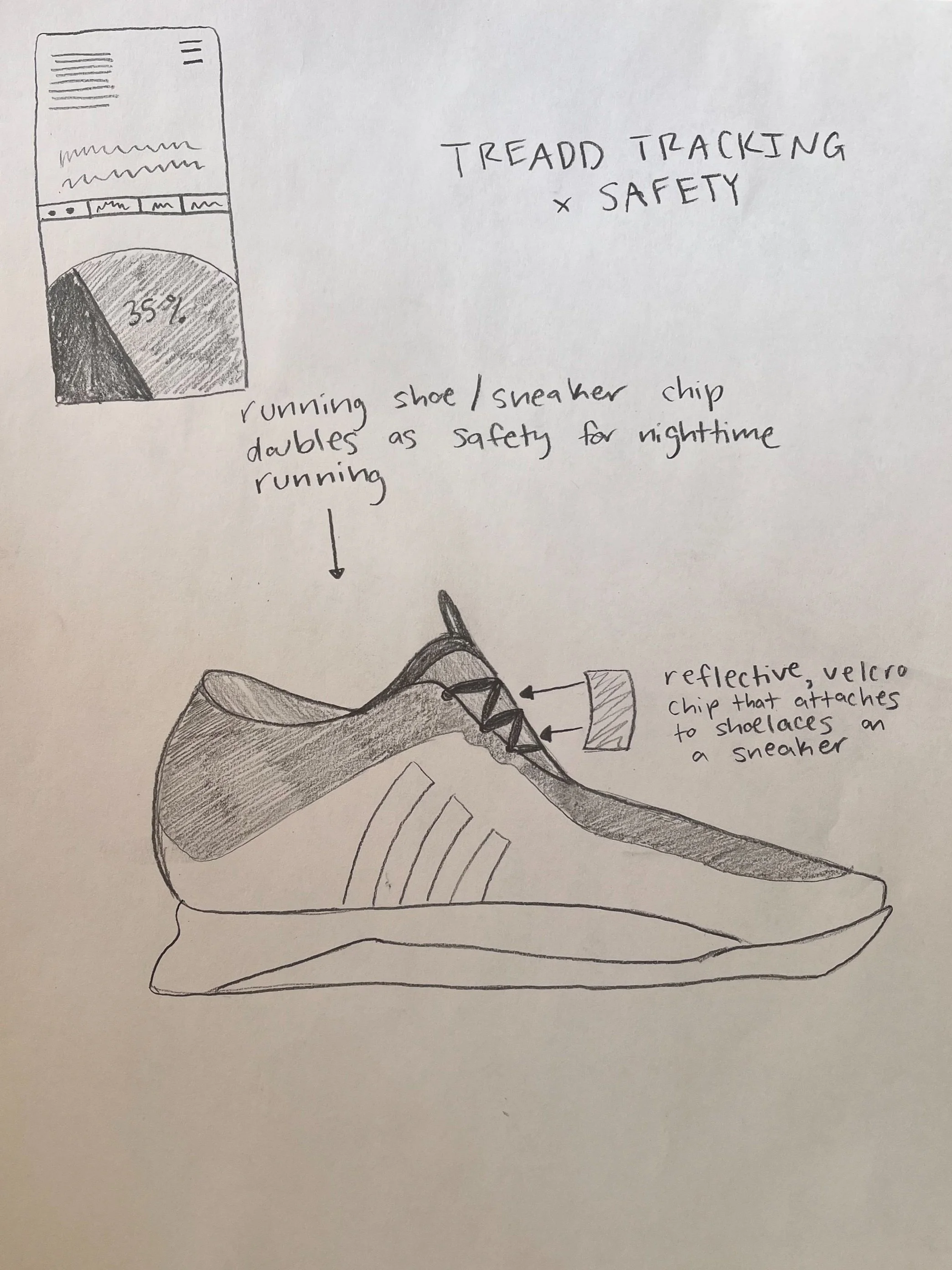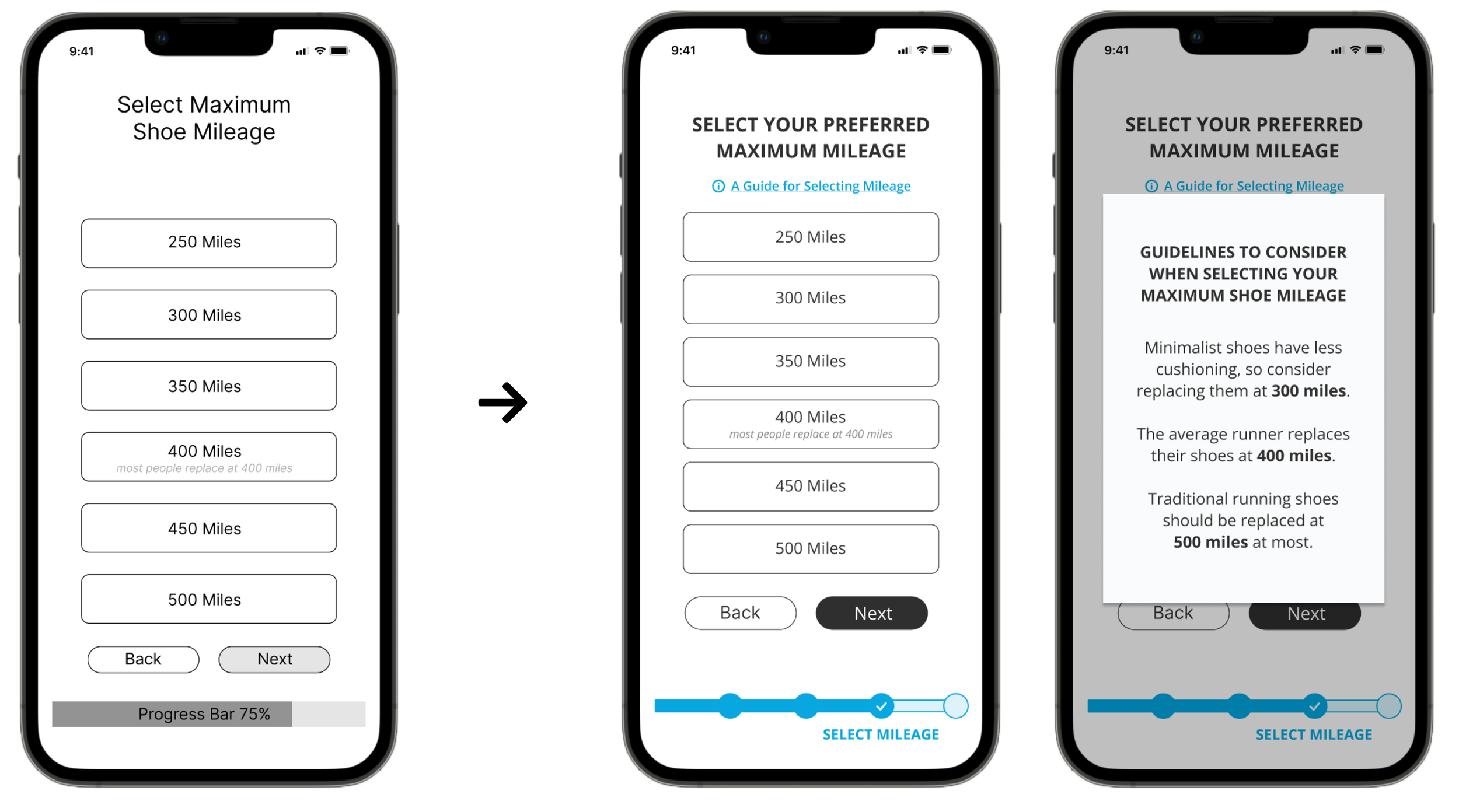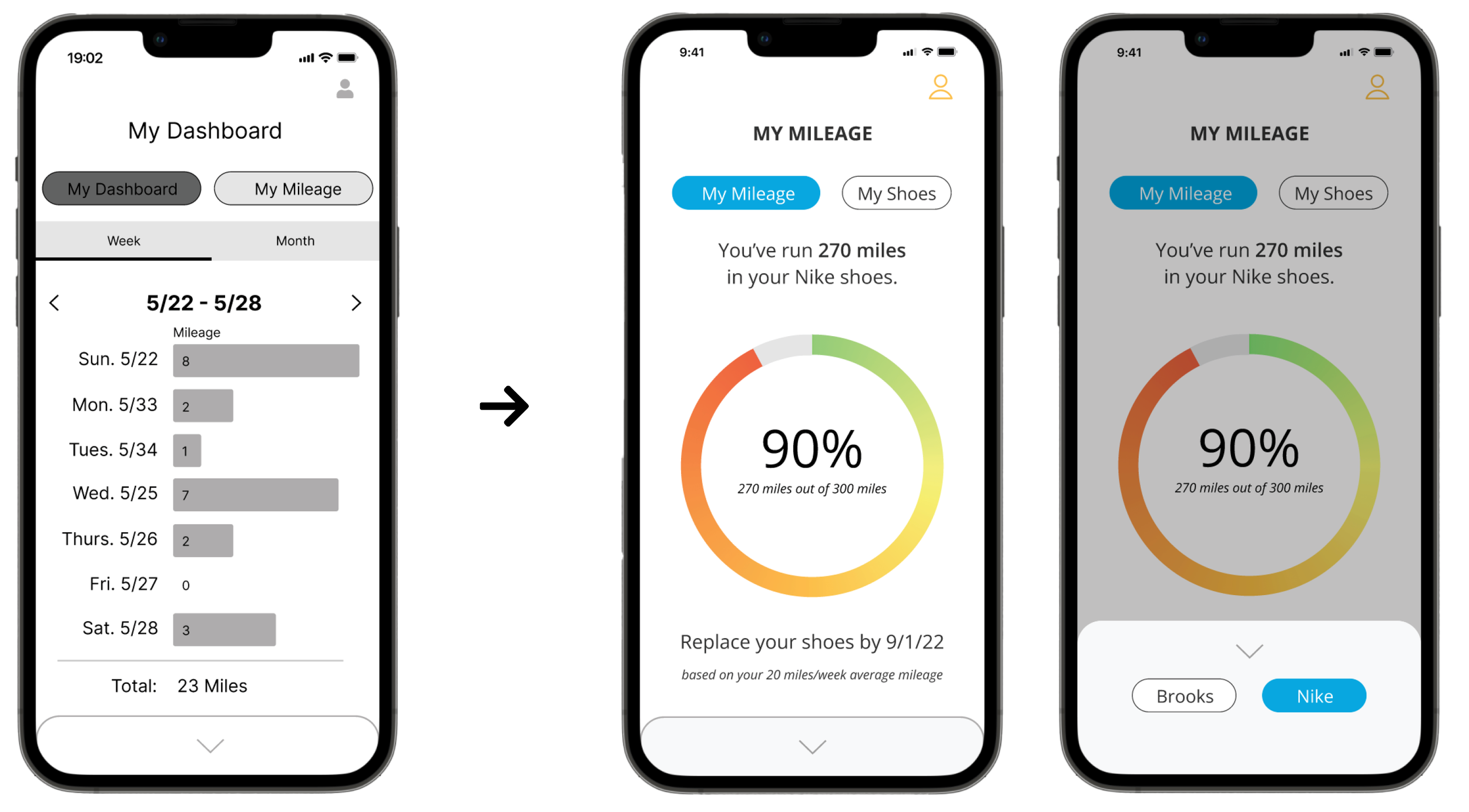TREADD
pronounced “tred”

Designed a tracking chip and mobile application to notify runners when to replace their shoes based on mileage.
CLIENT General Assembly Independent Project
MY ROLE UX Research + Ideation Session Facilitation + Product Design + User Testing
DURATION 3 Months
Setting the Scene
I’ve been a competitive athlete my entire life. From gymnastics in elementary school to pole vaulting at the University of Virginia, athletics was a huge part of my life. Unfortunately, injuries were just as prevalent. I have compartment syndrome in my calves (chronic shin splints). I noticed it typically flares up when training and running in worn-out shoes.
I, among many other runners, teammates, friends, and family, struggle with knowing when it’s time to retire our footwear. We often replace our shoes prematurely or too late after injuries appear. Some runners try to combat this by tracking mileage manually, but even then, it is time-consuming and tedious to do so with accuracy.
Users We Focused On
-
Competitive runners
who value convenience and performance.
-
Leisurely Runners
who value longevity & cost-effectiveness.
Breaking Down the Problem (Statements)
-
Competitive runners who want to optimize their performance and reduce injury risk need a reliable way to track their shoe mileage accurately. However, they struggle to find an efficient method to track this and know when to replace their shoes.
-
Leisurely runners who want to maximize the lifespan of their shoes and avoid overspending on replacements need a reliable way to track shoe mileage. However, they struggle to determine the perfect time to replace their shoes, leading to premature replacements or running in worn-out footwear.
Exploring Solutions (HMW Statements)
-
How might we provide competitive runners with personalized shoe mileage tracking and timely notifications, helping them optimize performance and reduce injury risk without feeling overwhelmed by manual tracking and data entry?
-
How might we help leisurely runners track their shoe mileage and receive notifications when it's time to replace their shoes, ensuring they get the most value and longevity from their footwear without the guesswork?
Understanding Our Users
User research shaped TREADD’s design through a threefold approach.
General population study for broad insights
User Interviews
Moderated usability tests for real-time observations
General Population Study Discoveries
Our general population study revealed that many runners struggle to keep track of shoe mileage—especially those who rotate between multiple pairs for different terrains or training needs (National Library of Medicine).
Most experts recommend replacing shoes every 300–500 miles to maintain proper cushioning and reduce the risk of injury (Nike). But without a reliable tracking method, runners often continue using worn-out shoes, unknowingly increasing their risk for shin splints, plantar fasciitis, IT-band syndrome, and stress fractures (Run Hive).
Even when shoes look fine on the outside, subtle breakdowns in structure can compromise stability, alter running mechanics, and cause overuse injuries over time (Soles4Souls). These risks highlight the need for a more seamless, shoe-specific mileage tracking system.

“Our training logs were the biggest complaint of collegiate running because they were so tedious to keep up with, and quite frankly, inaccurate.”
Maddie, Competitive Runner
User Interview Takeaways
Users often wait too long to replace their shoes, but value the comfort and safety of new ones. Both wish for an easier way to track and replace shoes efficiently.
Kathy (Leisurely Runner)
-
Has never tracked mileage but sees its potential value
Interested in a passive solution that syncs with existing devices
Sees emotional and motivational value in seeing progress
-
Relies on visual cues or physical discomfort to trigger replacement
Rough estimate: replaces every ~200 miles
Replacement not guided by injury prevention or performance loss
-
Physical side effects: blisters, Achilles irritation
Supply chain issues made it hard to find the right shoe
Would benefit from reminders to start looking earlier
Maddie (Competitive Runner)
-
Switched shoes post-marathon due to discomfort in shins and hips.
Felt immediate improvement after switching to new shoes.
Uses shoe mileage as a key indicator for when it's time to replace shoes, especially when discomfort arises.
-
Replaced shoes at around 300 miles based on this tracking system.
Training log required weekly submission with mileage and comments on physical condition.
-
Wishes for a more efficient way to track workouts, especially with broken-up sessions like track workouts.
Would prefer an app or syncing solution to combine data from multiple runs or workouts into one log.
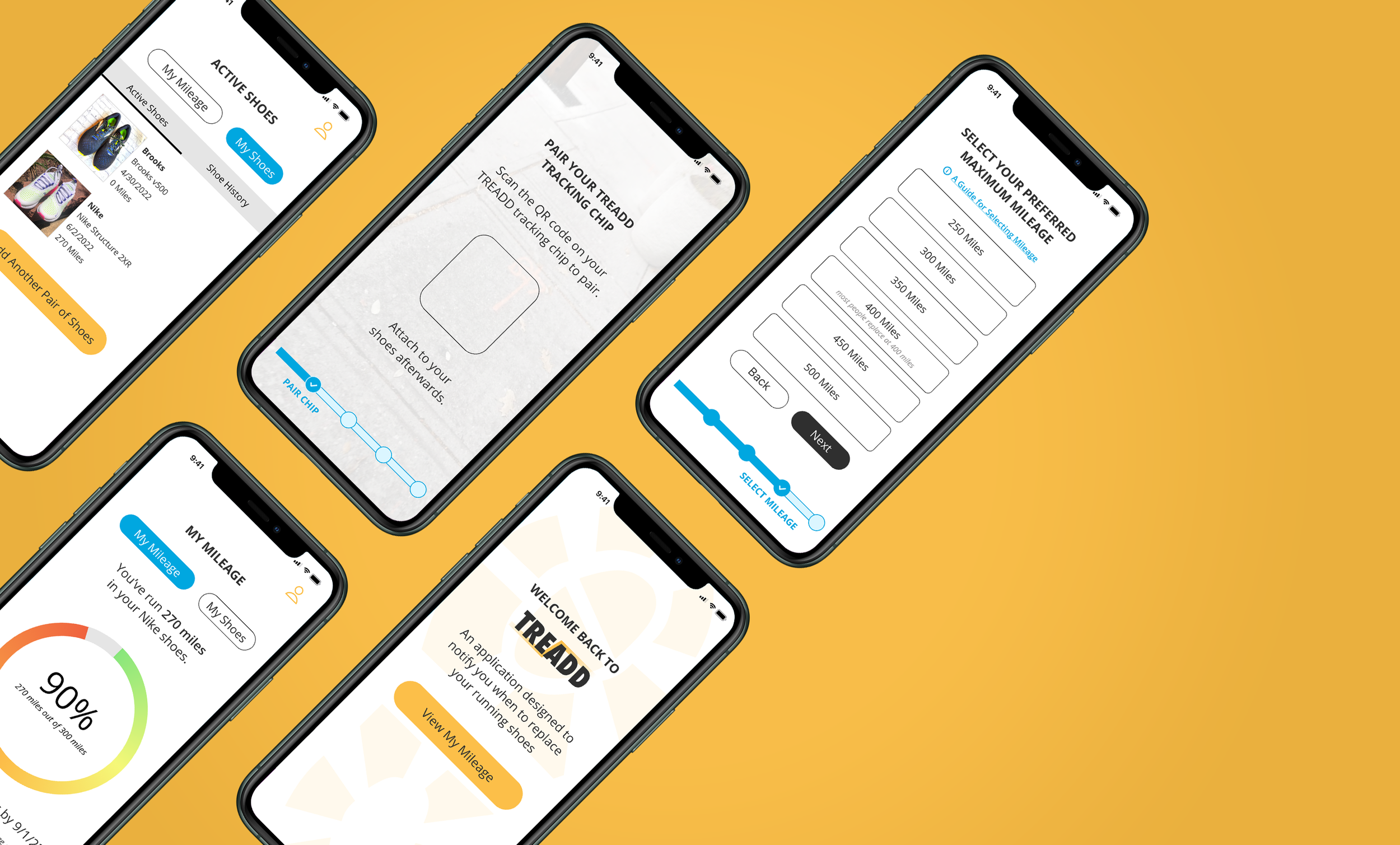
Ideating
We ran a focused ideation session to bridge research insights with design solutions using our problem and HMW statements as a foundation. Our team engaged in a rapid Crazy 8s exercise, generating a range of ideas before refining them into structured sketches. This process helped transform broad concepts from our general population study into tangible design directions, leading into the next phase: prototyping.
How will we design TREADD to meet our users’ needs?
How will we differentiate ourselves from key players in the Wearable Technology & Fitness Tracking landscape?
Crazy 8’s Output
Our HMW statements served as the foundation for our Crazy 8s exercise, ensuring our ideas were directly tied to user needs and key challenges.
Refined Sketches
We identified recurring themes and the most promising concepts in our Crazy 8’s, which we then refined into more structured, detailed sketches.
Wireframing
Based on user research, we designed a wireframe that explored effortless mileage tracking.
Actionable Outcomes
Here are the top things we heard from users during our moderated usability tests, which then guided key refinements in our final design.
Feature Spotlight: Alerts
The alerts feature is a key component of TREADD, designed to proactively inform runners when it’s time to consider replacing their shoes.
Runners receive notifications at 50%, 75%, and 90% of their registered maximum mileage. These alerts prompt them to revisit the TREADD app, where they can view detailed mileage progress and stay ahead of potential wear-related injuries.
The Big(ger) Picture: TREADD is Scalable
-
We plan to add an e-commerce feature for runners to repurchase their worn-out shoes directly within the TREADD application.
-
We expect athletic performance brands will be interested in featuring the TREADD tracking chip in their shoes to establish a competitive advantage in the market.


